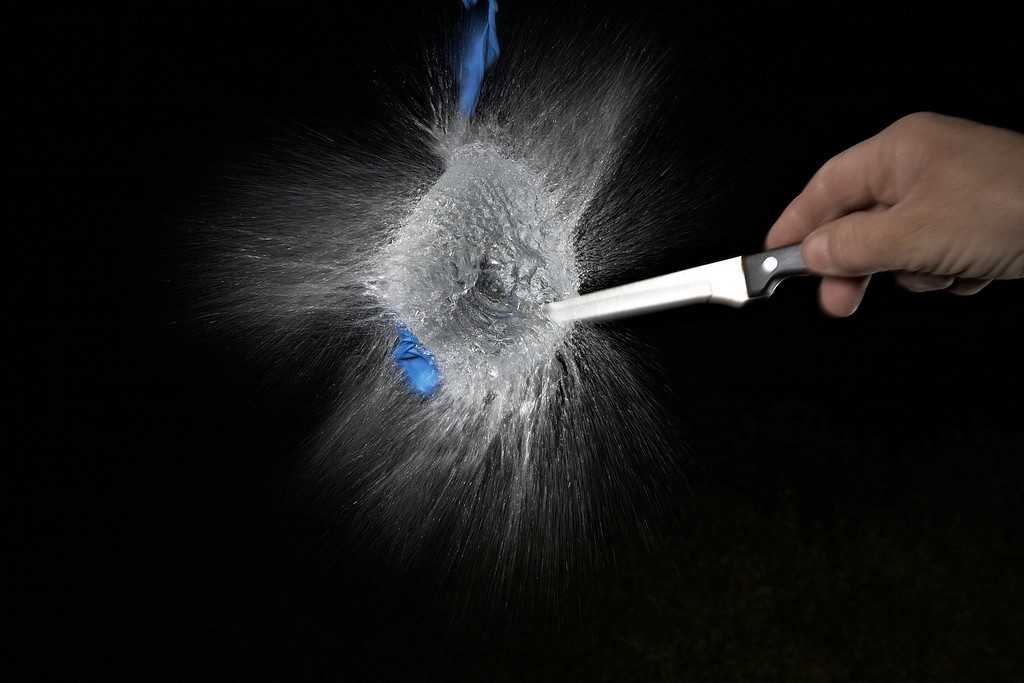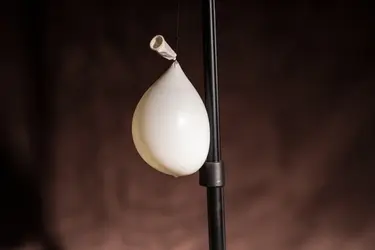Ummm, a couple of things. You wrote, "that increased shutter speeds are
in fact required to stop motion. Any photographer knows that in order to completely stop motion, you need to be at about 1/500 to 1/1000 to get decently sharp pictures. Depending on the speed of the subject, you could need something as fast as 1/4000 (motorcycles, etc.). "
Sorry, but that is not an accurate statement, and is based on incomplete understanding. A SLOW shutter speed, like say, 1/125 second can easily be used to stop very high-speed motion as long as the FLASH has a fast duration, and the exposure comes almost exclusively from the FLASH. In fact, a person can turn of all the lights in a room, and lock the shutter open, turn on a high-speed machine like say a lathe running at 800 R.P.M., and then fire, at leisure, a very short-duration flash unit placed close to a lathe and set at 1/64 power, and get a flash speed that's roughly 1/30,000 second in duration, and in that manner, take a high-speed flash image. This is in fact the way the VERY FIRST high-speed flash images were made in the 1850's (yes,the
eighteen-fifties), in a darkened room, with light provided from a type of
magneto-created electric spark. Most of today's water-droplet capturing nuts use a similar situation: a very low-powered electronic flash unit, placed fairly close to the water droplets, in a dim room. The key is that the f/stop and shutter speed must be set so that the ambient light is UNDER-exposed by a good deal; if the ambient is close to the flash in power level, then what is called "ghosting" will occur.
So, in most situations, using a normal flash synch speed of 1/60 (old days), or 1/125 second (1970's), or 1/200 to 1/250 second, it is easily possible to get STOP-MOTION, frozen, ultra-clear images using electronic flash that fires one,single,discrete "pop!" of flash output, at a sufficiently short time duration. Something like say an old Vivitar 285 flash at 1/4 power will provide a very brief flash duration, especially at close distances.
Flash at 1/1000 or more - Photo.net Portraits and Fashion Forum
This thread above talks about some different flash concepts, including the way HSS-enabled flash triggering systems triggering a SPEEDLIGHT can ALSO be used to trigger much slower-duration MONOLIGHT flashes, albeit at reduced Guide Number. This comes from Joseph S. Wiesniewski, one of *the* most technically savvy photographers the web has ever seen. Joe knows engineering, and is in fact, an engineer who used to work for one of the Detroit automobile companies before he retired.
A few years ago, when the Nikon D70 and D70s were current, there was a mini-movement of using those cameras to shoot flash in daylight, at speeds up to 1/8000 second. How? Those cameras, as well as the Nikon D1,D1h,and D1x, had both mechanical AND electronic shutters, will allowed simple PC-cord-connected flash firing with full synch, with regular speedlight, or monolights, as long as they were not connected to the camera's hotshoe, which would arbitrarily cut speed off at the top norma speed of 1/500 X-synch. SONY also made a numbner of cameras that had this type of shutter, up until the 10 MP era in their early d-slrs.
Anyway, I guess what's going on,according to Joe, is that with HSS-enabled triggers and speedlights, monolights can ALSO be triggered by slave, and will synchromize at high speeds, above the X-synch speed, albeit only on the long, slow-duration "trailing end" of the flash, after the t.5 or motion-stopping "PEAK" OF 1)BRIEF and 2)HIGH-power output has already been reached and dropped off, hence the slow speed (meaning poor motion stopping, due to looooong flash duration), and hence the lowered effective flash power.
Look at the graphs here: you can see the t.5 "peak power" on the far left side of the graphs; on the right hand side is the LOW-power, and sloooooow part, called the "tail".
figure1.png









![[No title]](/data/xfmg/thumbnail/39/39419-5d4fd8535ab4f6e01caa38b72bf396e0.jpg?1734173503)






